Charles Dickens: 200th anniversary of his time in factory as a child
- Published
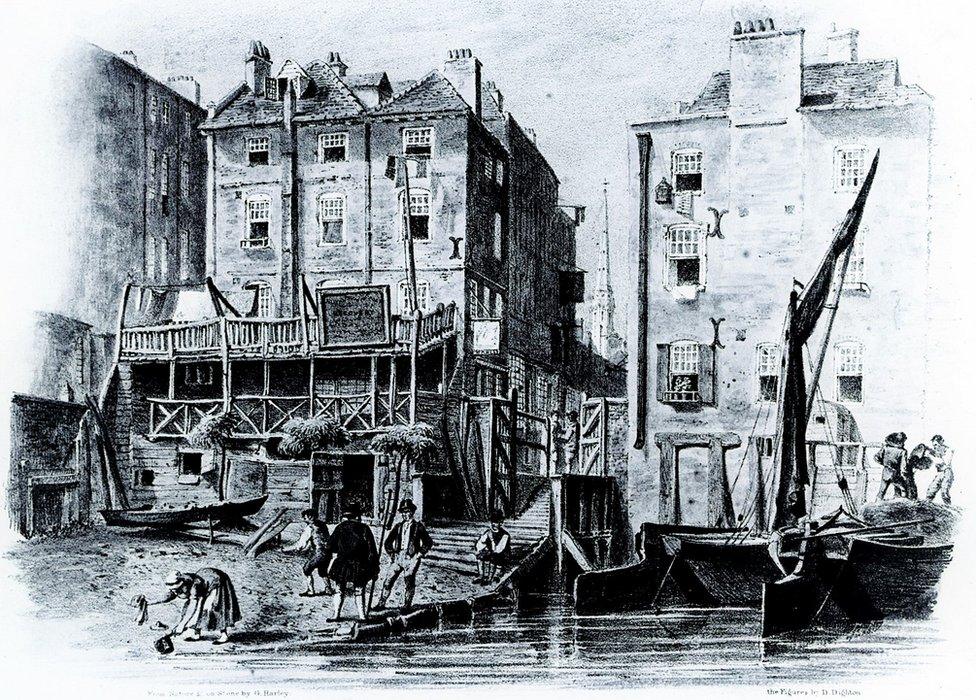
When Dickens started work the factory was based at Hungerford Stairs, close to where Charing Cross Station is today
Letters and other items have gone on display to mark what is believed to be the 200th anniversary of when Charles Dickens was forced to leave school and begin factory work.
The novelist was sent to work at Warren's Blacking Factory when he was a young boy as his family faced poverty.
He kept his time there a secret but it proved to be a pivotal moment for his life, politics and writing.
The objects have gone on display at London's Charles Dickens Museum.
With his family desperately in need of money, a young Dickens was sent to the dilapidated factory, in central London, where he sat at a desk for 10 hours a day, six days a week sticking fixing labels to bottles of boot-cleaning blacking liquid.
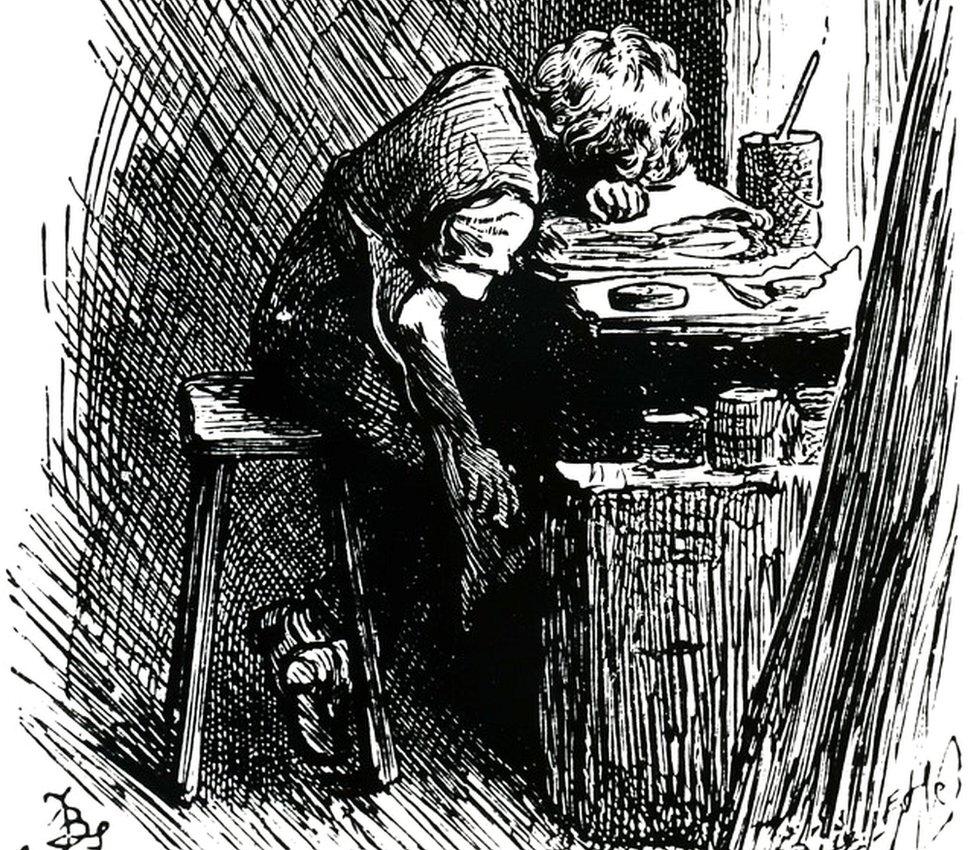
Dickens told his biographer the factory was a "crazy, tumbledown old house... literally overrun with rats"
It had previously been thought Dickens started working there in 1824 aged 12, but documents found by historian Michael Allen, external led to suggestions he started in autumn the year before when he was 11.
After his father finally stopped his son working, in September 1824, Dickens kept his time in the factory hidden, with it only being made public by his biographer John Forster in 1872 after the writer's death.
Nevertheless, the time had a huge impact on Dickens, influencing many of the works he became so famous for like David Copperfield and Oliver Twist, according to Frankie Kubicki, senior curator at the Charles Dickens Museum.
"His life there was an experience he would never forget," she explained.
"The 11-year-old boy who walked to work from lodgings in Camden and Southwark every morning experienced the ugliness of factory life and received a permanent mental imprint of the hardship that was lurking to find impoverished children in the capital city."
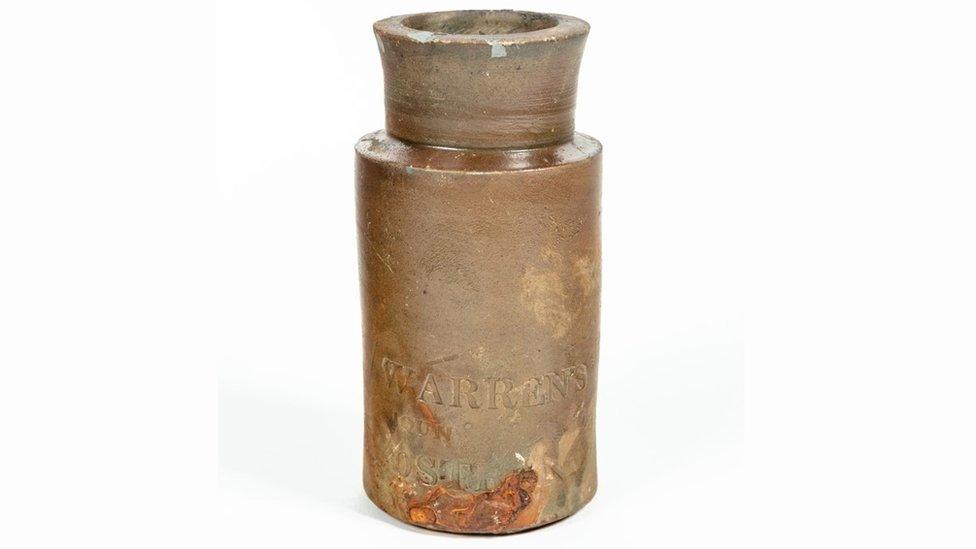
The writer had to attach fixing labels to bottles of boot-cleaning blacking liquid six days a week
As such, the museum has placed rare objects in what was once Dickens' study to mark the anniversary.
Two are letters by John Dickens, which reveal the financial difficulties the family faced, as well as the fracture caused to the writer's relationship with his parents as a result of being forced into work.
A stoneware bottle inscribed "Warren's liquid. 30 Strand" on one side and "Blacking Bottle" on the other, which was discovered in an old ice well in 2006 and would have been the type of object Dickens worked on, has also gone on display, as has an early edition of Forster's The Life of Charles Dickens - the book that revealed to the world the writer's life as a child worker.
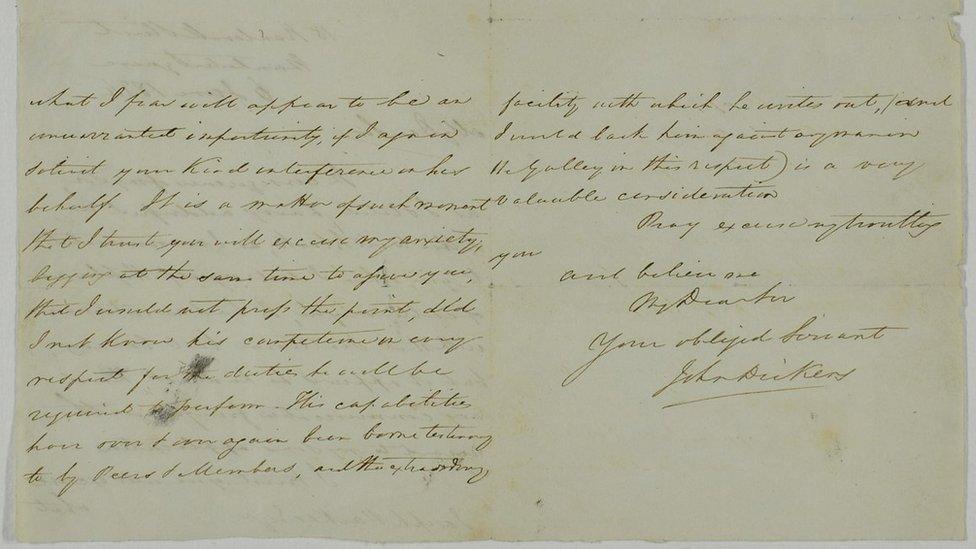
John Dickens wrote to politician Joseph Parkes in 1834 trying to find his son work as the family faced more financial difficulty
The items will be on display at the museum, based in a house Dickens once owned in Holborn, until 21 January 2024.

Follow BBC London on Facebook, external, Twitter , externaland Instagram, external. Send your story ideas to hellobbclondon@bbc.co.uk, external
Related topics
- Published30 August 2022
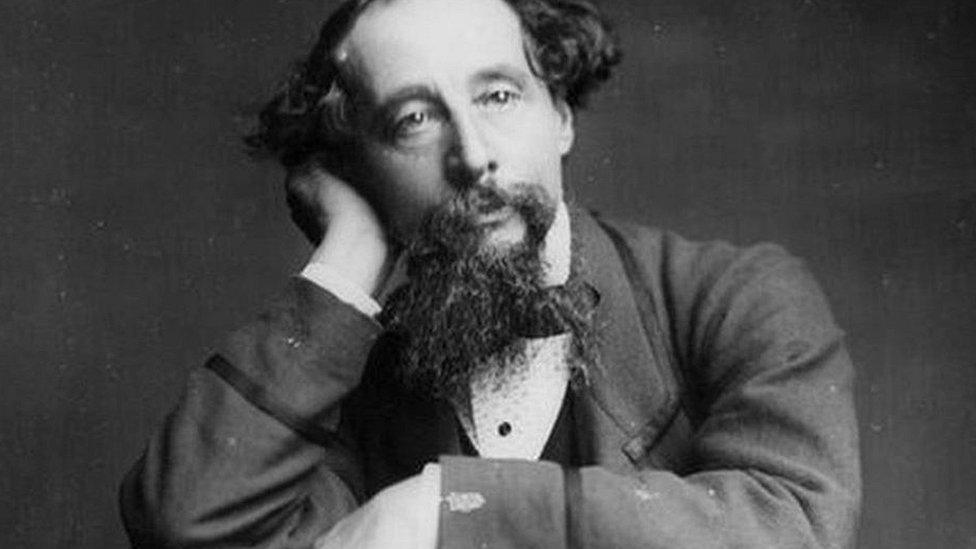
- Published18 July 2019
